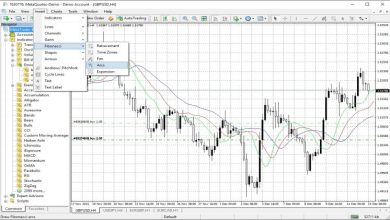Financial Corruption Screening – Safeguarding Transaction and Assets

Introduction
The multibillion-dollar industry of corruption and fraud has severely harmed global institutions because corruption is growing, and not fighting it through efficient monitoring systems is pointless. You need a solid monitoring plan to combat financial crime networks and recognize, stop, and reduce corruption risks. Money laundering, bribery, fraud, cronyism, extortion, embezzlement, and other corrupt practices are all included under the umbrella term of corruption. Combating money laundering and corruption go hand in hand since money launderers use corruption as a means of escaping a convoluted financial system. Institutions can design and implement a corruption monitoring strategy as a corrective action by knowing the scope of risks and how they relate to quantifiable elements. This blog aims to develop a knowledge of corruption monitoring.
Stay with AML Watcher to understand corruption screening- a vital tool to safeguard financial and reputational challenges.
Why is Corruption Monitoring Important?
Various layers of checks in the efficient monitoring processes are not a mere choice but a regulatory requirement. Corruption monitoring tools protect against multiple crimes but on top of all, corruption and money laundering. This enhanced and automated corruption screening software ensures people are clean from illicit evils. The primary goal is to strike a regulatory check to preserve the integrity and transactions of individuals, financial institutions, and all kinds of entities.
According to Financial Action Task Force (FATF), there are different forms of corruption, including embezzlement, bribery, public property, and funds theft, as corruption undermines law and governance, provides cover for terrorist organisations and criminal syndicates, and has a substantial negative influence on political, social, and economic stability. Money laundering and corruption frequently go hand in hand, as crimes like bribery and public funds theft continually aim to obtain illegal funds. Promoting financial system openness, making it easier to identify, look into, and prosecute cases of corruption and money laundering, preserving the integrity of the public sector, and guarding against exploitation of private sector institutions, the FATF Standards play a critical role in the fight against corruption. FATF Ministers pledged to tighten FATF Standards on beneficial ownership and address citizenship misuse by investment schemes in 2022.
Corruption Monitoring Need in Industry: Banks and Financial Services
PEP screening is essential for banks to maintain compliance with regulations, especially regarding anti-money laundering (AML) rules. PEP screening is crucial to thorough due diligence procedures financial institutions must perform to comply with these requirements. PEP screening is necessary to prevent inadvertent interactions with politically exposed individuals who may be involved in corruption or illicit activities. By carefully choosing their clients and transaction counterparties, financial institutions safeguard their reputation in the financial markets and reassure investors and clients of their commitment to moral behavior Hence, conducting thorough PEP checks, banks may demonstrate their commitment to abiding by AML regulations and fortify their compliance processes.
How are Financial Institutions affected by Weak Corruption Monitoring?
Specific guidelines and regulations pertaining to anti-money laundering (AML) must be followed by organizations and financial institutions. The paper “Recalibrating the Banking Sector with Blockchain Technology for Effective Anti-Money Laundering Compliances by Banks” creates an awareness of how cutting-edge technologies like blockchain affect the banking industry and how they can be used to comply with AML rules. It specifically examines the manipulation of AML and KYC procedures by higher authority individuals, mostly PEPs, and the amount of money banks need to spend to protect the integrity and financial security of their customers. Additionally, it offers suggestions and ideas for using blockchain technology to solve money laundering problems.
Wrapping Up: Detecting Corruption through the AML Watcher Corruption Monitoring Tool
A comprehensive method for identifying corruption is offered by the AML Watcher Corruption Monitoring Tool. It provides an exhaustive list of PEPs that covers up to four PEP levels worldwide, ensuring that no PEP is missed or that no innocent person is marked as an imminent risk alert. We particularly concentrate on reducing the false positives in this endeavor. Additionally, the technology may examine local media sources for scandals or corruption thanks to characteristics called Adverse Media Screening. It is connected to global leak databases that display assets and offshore businesses that may be hidden. AML Watcher adds an extra layer of scrutiny to your AML procedures by searching whistleblower databases for identities. This ensures that your due diligence procedures are thorough and effective, shielding your company from possible financial crimes.
Contact AML Watcher to learn more about Corruption Monitoring Services, and the Corruption evaluation process.



